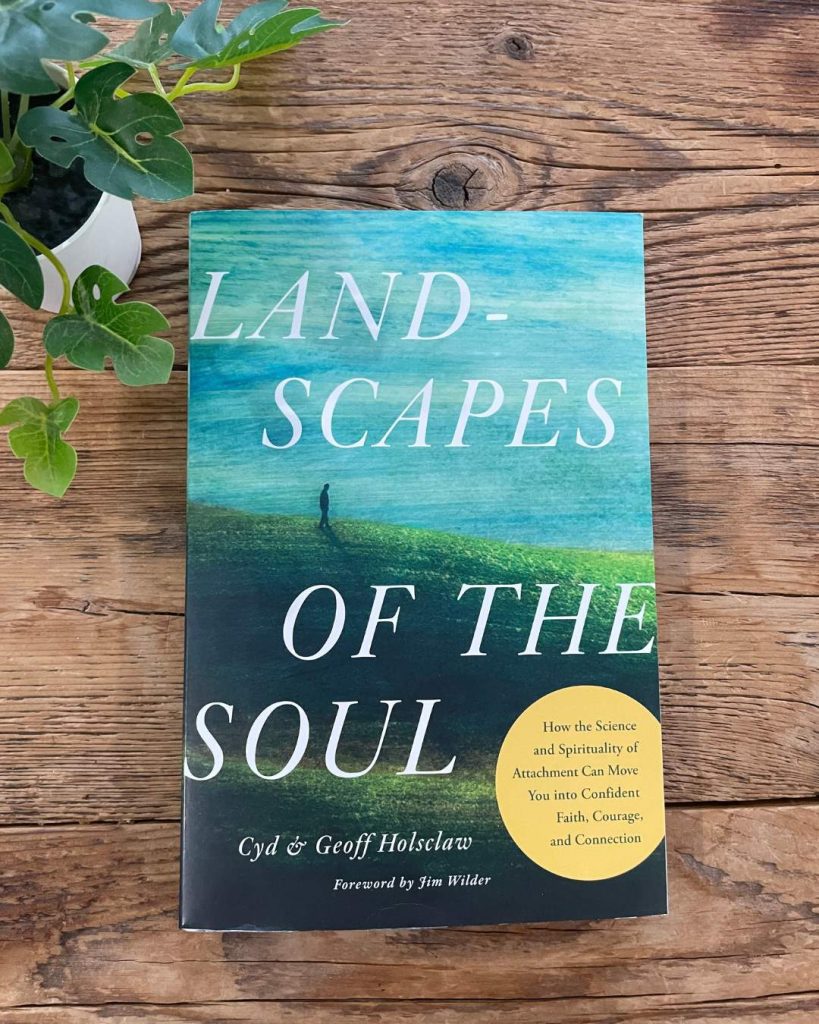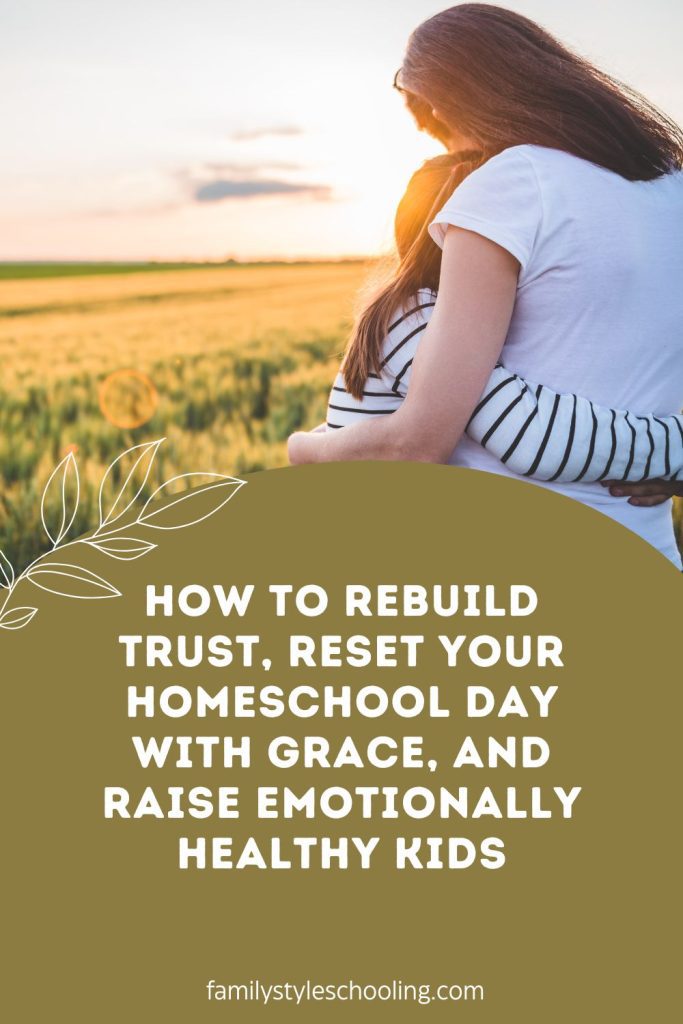30% Is Enough: The Grace of Repairing Ruptures in Homeschool and Home Life
I recently heard a webinar that stopped me in my tracks.
It was called The Nerve: Connecting the Brain and Racism, and in it, Kim Honeycutt—author of But Your Mother Loves You—shared a statistic I can’t stop thinking about:
For a secure attachment to form between a parent and child, that parent only needs to show up in the way the child needs 30% of the time.
The other 70%? That’s rupture and repair.
What matters most is not avoiding failure. It’s learning how to repair the disconnection.
I sat there, stunned. And then—relieved.
Because suddenly, there was room to breathe.
The Myth of Always Getting It Right
In the early years of homeschooling, I thought my job was to keep everything connected all the time. No cracks, no bad days. I was teacher and mother, leader and nurturer, curriculum planner and snack provider.
But when things got hard—when my child resisted the math lesson, or I snapped over spilled notebooks—I felt like I was failing at both jobs.
What I didn’t know then was that the rupture was normal. Even necessary.
What matters most isn’t avoiding rupture. It’s making room for repair.
When We Started Butting Heads
I can still remember the first time we truly clashed over schoolwork. My child was frustrated. I was frustrated. There were tears on both sides, and I wanted so badly to just push through. Let’s finish the lesson. Let’s check the box. Let’s get back on track.
But something in me paused.
I realized what we needed wasn’t more discipline or better behavior.
We needed more connection.
So we put the books away.
And we played a game.
We went for a walk.
We sat close and laughed again.
That moment didn’t solve the school problem.
But it saved the relationship.
And in the long run?
The relationship is the education.
Repair Is the Real Curriculum
Repair looks like a whispered, “I’m sorry I snapped at you.”
It looks like a reset—not because you ignored the problem, but because you came back to it with love.
In homeschooling, we wear so many hats. It’s easy to lose sight of the emotional thread that weaves it all together. But when we remember that secure attachment doesn’t come from perfect behavior—it comes from timely, loving repair—we give ourselves and our kids room to grow.
What Repair Has Taught Me
- That connection matters more than control.
- That behavior is often a bid for relationship.
- That I don’t have to get it right every time—I just have to return.
And when I model that kind of humility and return, my children learn it too.
This Isn’t Just for Parenting
This 30/70 rule?
It’s saved more than homeschool days.
It’s reshaped my marriage.
Helped me model apology and reconnection.
Taught my kids that life is full of ruptures—but healing is possible.
What a gift to send them into the world knowing that perfection isn’t required, but repair is always available.
Making Space for Grace
So the next time the math lesson ends in tears,
or the chore chart gets ignored,
or you and your spouse find yourselves misfiring in every direction—
Pause.
Remember: you’re not failing. You’re just in the 70%.
And every repair you offer is a seed planted in the soil of trust.
Every “I see you” and “Let’s try again” is a thread that strengthens the fabric of your home.
A Final Word for the Tender-Hearted
To the homeschooling mom carrying the weight of all the roles…
To the dad trying to be strong when connection feels fragile…
To the caregiver worried they’ve already messed up too much…
30% is enough.
Rupture is expected.
Repair is the way forward.
And grace?
Grace is what holds it all together.
Absolutely. Here’s a thoughtfully crafted addition to your blog post that introduces and briefly reviews Landscapes of the Soul by Cyd and Geoff Holsclaw, beautifully woven into your existing theme of rupture and repair in relationships—especially within homeschooling and family life:
📚 Want to Go Deeper? Landscapes of the Soul Offers a Map for Healing
If this idea of rupture and repair resonates with you and you want to explore it further through a Kingdom lens, I can’t recommend Landscapes of the Soul by Cyd and Geoff Holsclaw enough.

This book offers a beautiful and deeply practical exploration of how our attachment styles shape our relationships—with ourselves, our families, and with God. It puts language to something many of us feel but struggle to name: why certain patterns keep repeating in our parenting, our marriage, or even in our walk with Jesus.
One of the most helpful sections of the book walks through how rupture and repair are central not just to child development, but to spiritual formation. We come to know ourselves—and God—not through avoiding pain, but by returning to connection again and again.
Five Attachment Styles
Cyd and Geoff outline five attachment “landscapes” (like the Wounded Desert, the Tundra of Control, or the Garden of Security), helping you understand:
- Where you tend to go in stress or conflict
- What kind of repair you need
- How to walk toward secure attachment, even when your story didn’t start there
- And how to connect more meaningfully across different attachment styles within marriage or family
This is not a dry academic book. It’s full of grace, story, and hope—and it's written by a married couple who share from both clinical experience and personal vulnerability.
As a homeschooling parent and a follower of Jesus, I found Landscapes of the Soul incredibly grounding. It reminded me that I don’t have to parent perfectly—I just need to stay in the story, keep returning to connection, and receive the same grace I’m trying to give.
If you’ve ever wondered why connection feels hard sometimes—or how to grow deeper roots of security for yourself and your family—this book might be just what your heart needs.
🌿 Connection-Based Homeschool Reset Ideas
For the days when the lesson isn’t landing and hearts feel far apart
1. Put the Books Away and Go for a Walk
Fresh air, movement, and side-by-side conversation can shift the mood like nothing else. Let them talk about anything butschool. Just walk, wonder, and breathe.
2. Make a Snack or Tea Together
Food is grounding. Let them stir the cocoa or slice the apples. Sit together at the table—no agenda. You’re not trying to teach anything. You’re just showing up with warmth.
3. Read Aloud from a Favorite Book
Go back to an old favorite or start something new. Let your voices rise and fall together in a shared story. Laughter, imagination, and even tears can build bridges.
4. Play a Quick Game
Board games, card games, or even 10 minutes of charades can break tension and bring delight back into the room. Choose something low-pressure and fun.
5. Snuggle and Watch a Movie with a Good Story
Sometimes what you both need is to pause real life and enter someone else’s story for a while. Pick a movie that’s gentle and soul-filling. Watch it under blankets.
6. Do Something Silly Together
Have a two-minute dance party. Speak in accents. Make up a song about how hard math is. Laughter isn’t a distraction—it’s glue for connection.
7. Tell a Family Story
Tell them about the time you struggled in school, or how their grandpa learned to ride a bike. Let them see that growth takes time—and love shows up even in failure.
8. Ask “What’s really bothering you today?” and Listen
Sometimes the battle isn’t about the math at all. It’s about big emotions, tired hearts, or something they can’t name. Give them space to talk. Don’t fix. Just be present.
9. Work with Your Hands Together
Knead bread. Pull weeds. Fold laundry. Sometimes connection grows best in shared silence, when your hands are busy and your hearts are safe.
10. Pray or Breathe Together
A simple breath prayer. A quiet moment to say, “Jesus, we’re tired. Help us reconnect.” It doesn’t have to be long or fancy. Just shared. Just real.
🌼 Remember:
The world will keep telling you that productivity matters most.
But heaven keeps whispering:
Love is the lesson. Connection is the way.
And when you pause to reconnect—even just for a few moments—you’re not falling behind.
You’re planting something deeper than facts:
Trust, safety, and joy.
Betsy Strauss is an unexpected homeschooler, mother of three, who is in a relationship with a sweet man for life. She loves reading books, drinking coffee, and learning anything with her kids.


